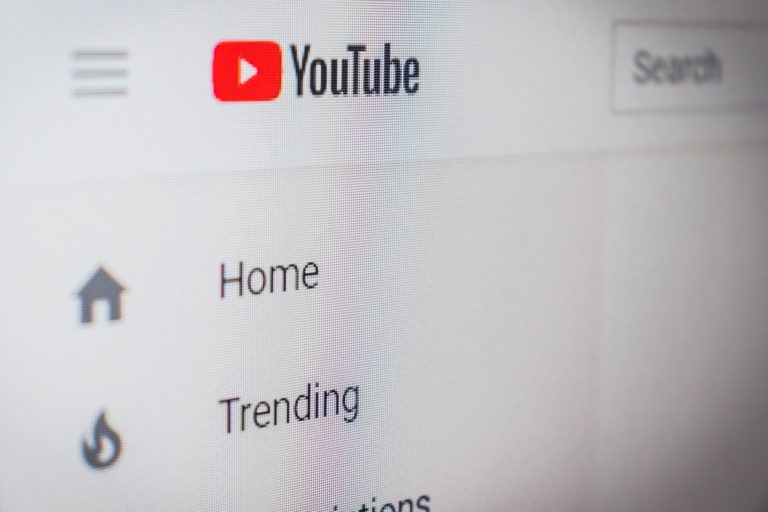The COVID-19 pandemic has completely changed the education system. Students’ learning halted for about two academic years, from March 2020 to around Fall 2021. In those unprecedented times, schools, colleges, and universities worldwide employed virtual education methods to ensure students continued learning.
Zoom classes and Google Form quizzes cemented their place as the primary mode of education during the pandemic. The learning quality, however, was seriously affected. Severe internet disruptions and connectivity issues compromised the audiovisual quality of lectures on Zoom. In these times, many students and tutors found an unlikely savior: YouTube.
Educators worldwide turned to YouTube and uploaded recorded video lectures, and students who couldn’t understand online lessons started using YouTube as an educational tool. Pre-recorded lectures were uploaded so that no information would be lost due to internet disconnectivity. And since there were many teaching channels on the platform, you had a lot of teaching methodologies to consult. As a result, YouTube as a learning tool has continued in the post-COVID era.
Despite its widespread usage and convenience, Youtube as an educational tool has some disadvantages that can shape how students decipher the information. Consider these pros and cons of YouTube as a learning tool:
YouTube as an Education Tool Advantages

YouTube can be an excellent pedagogical tool for several reasons, including:
1. Integration of Audiovisual Content
Your professor does not have enough time in a class to discuss every concept in its depth. As a result, you may end up not understanding the lesson.
Audiovisual content, such as animation, can help you better understand a concept. It is not possible to integrate animations in the limited time of class. Instead of conforming to traditional teaching methods, you can consider getting help from YouTube.
YouTube enables you to understand the content visually through animations and drawings, making it easier for you to grasp the concepts. Whether it is the mechanism of DNA Replication or the working of a Carnot engine, YouTube can help you visualize the process!
2. Flexibility
Maybe your teacher spent the entire lecture on easy and simple things and completely glossed over the concepts he should have elaborated on. But no worries! You can look up those glossed-over concepts on YouTube and study them as much as needed.
As your teacher has to plan the lesson for the whole class, it ends with your specific needs being ignored. One way to align your learning with your pace is to self-study through YouTube videos. There are no time constraints – you can consult the video lectures whenever you want.
3. Affordability
Most people hire a tutor if their classes aren’t enough. Private tuitions have a considerable market share and are a growing industry. However, tutors can be expensive, and not everyone can afford a tutor. Some homework-helping websites are also there to help students, but they charge hefty subscription fees to access their content.
YouTube videos are completely free. You don’t have to pay a single buck to access YouTube videos. You can get hours of well-delivered lectures on YouTube completely free.
4. Remote Access
One of the biggest comforts of YouTube is that you can access it anywhere. From the comforts of your bedroom to the free time between your classes, YouTube is accessible within a few clicks and swaps.
This is advantageous as YouTube’s resources are at your disposal all the time. In challenging times like COVID-19, YouTube was a big blessing due to its remote access. You can continue learning through YouTube on sick days when going to your school is not an option. If you are trying to learn a new skill or improve your fluency in a foreign language, YouTube ensures you don’t have to step out of your house and drive daily to learn.
YouTube as an Education Tool Disadvantages

While YouTube is a good learning tool, it is not without its drawbacks. They include:
1. Distraction
Suppose you are trying to understand a complex physics problem, and YouTube starts suggesting your favorite song. While older students might resist the temptation, young learners are bound to be distracted.
With millions of entertainment videos hosted on the platform, the potential to be distracted from your learning is far too high. While taking a break between a study session is beneficial for stress relief, YouTube’s algorithm can make you waste hours if you aren’t careful.
2. Unreliability
Anyone can upload a video on YouTube; not all of them will be certified pedagogs. You may likely come across a video with inaccurate information. Thus, it would help if you exercise caution when learning from YouTube. Always verify if the information you learned from YouTube is accurate from more reliable sources, and stick to established channels you can trust.
3. The Need For Internet
Utilizing YouTube’s resources requires a fast internet connection. Most remote areas in third-world developing countries do not have access to a stable internet connection. Moreover, the internet in these areas is expensive. Ensure your internet connection can support at least 480p quality without the constant need for buffering.
Without a fast internet connection, the video quality would not be crisp, making animations harder for you to understand. If you wish to use YouTube for educational purposes for an extended time, consider upgrading your internet connection.
4. Advertisements
Nothing frustrates you more than your flow being broken when studying. YouTube earns its revenue from advertisements. When studying, you can expect to have your attention divided by an ad at the most random time in the video.
While you can expect advertisements on any free platform, YouTube puts ads in the middle of the video, ruining your learning process. However, considering the massive repository of educational videos on YouTube, it is no wonder it needs a lot of ad revenue to stay competitive.
5. Individualism
In a class, you learn far more than what is in your books. You can learn many soft skills by working in groups, solving problems collectively, and effectively communicating with your peers. While YouTube may teach you the complexities of Molecular Biology, it cannot give you the hands-on experience a real-life class offers!
There is a lot to learn from group projects in a class environment. YouTube may help you understand a concept but cannot teach problem-solving and other essential skills.
Endnote
Since the COVID-19 pandemic, YouTube has emerged as a learning tool. While learning from YouTube has many advantages, it also has several drawbacks.
You should integrate many resources into your studying habits, including YouTube. However, relying solely on YouTube will not be an intelligent strategy. Find a balance between YouTube and other educational resources for the best learning experience.
